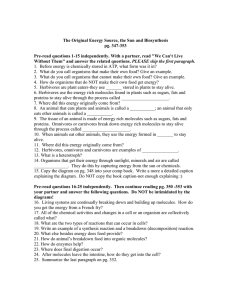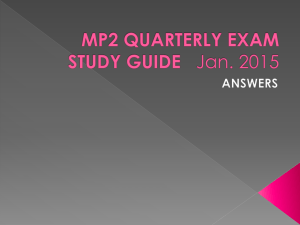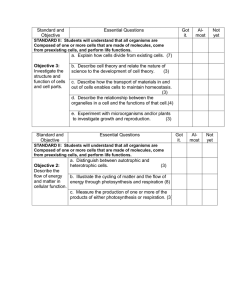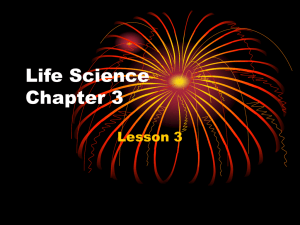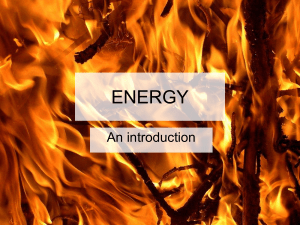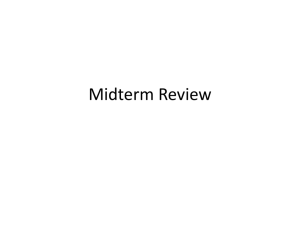The Original Energy Source, The Sun and Biosynthesis pg. 347-353
advertisement
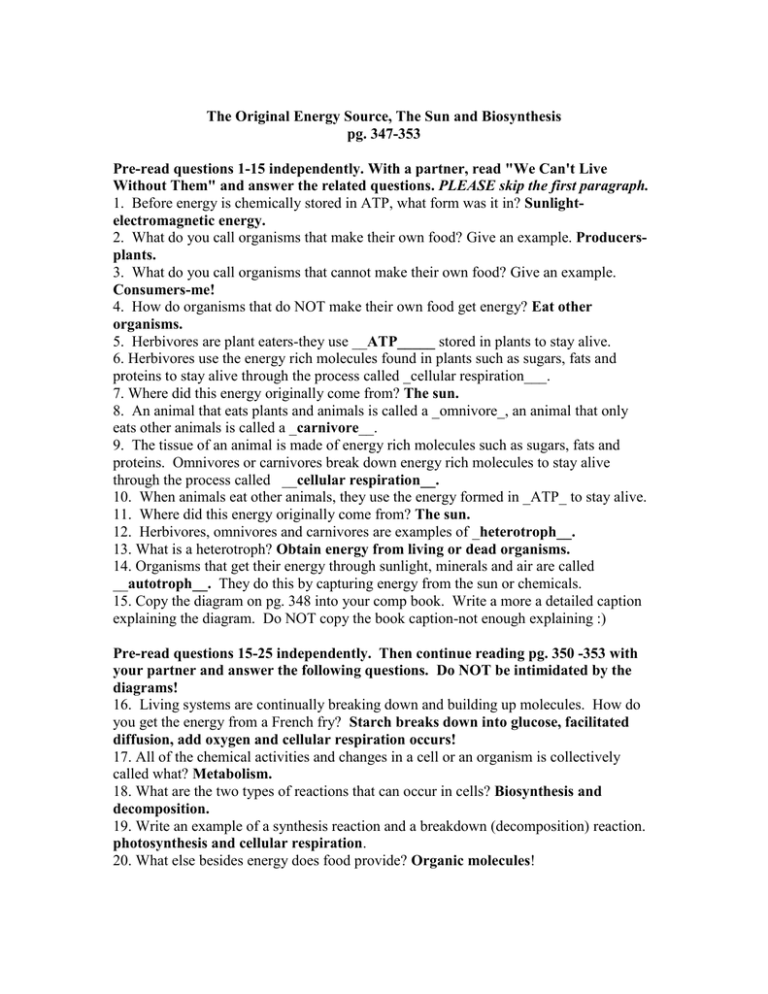
The Original Energy Source, The Sun and Biosynthesis pg. 347-353 Pre-read questions 1-15 independently. With a partner, read "We Can't Live Without Them" and answer the related questions. PLEASE skip the first paragraph. 1. Before energy is chemically stored in ATP, what form was it in? Sunlightelectromagnetic energy. 2. What do you call organisms that make their own food? Give an example. Producersplants. 3. What do you call organisms that cannot make their own food? Give an example. Consumers-me! 4. How do organisms that do NOT make their own food get energy? Eat other organisms. 5. Herbivores are plant eaters-they use __ATP_____ stored in plants to stay alive. 6. Herbivores use the energy rich molecules found in plants such as sugars, fats and proteins to stay alive through the process called _cellular respiration___. 7. Where did this energy originally come from? The sun. 8. An animal that eats plants and animals is called a _omnivore_, an animal that only eats other animals is called a _carnivore__. 9. The tissue of an animal is made of energy rich molecules such as sugars, fats and proteins. Omnivores or carnivores break down energy rich molecules to stay alive through the process called __cellular respiration__. 10. When animals eat other animals, they use the energy formed in _ATP_ to stay alive. 11. Where did this energy originally come from? The sun. 12. Herbivores, omnivores and carnivores are examples of _heterotroph__. 13. What is a heterotroph? Obtain energy from living or dead organisms. 14. Organisms that get their energy through sunlight, minerals and air are called __autotroph__. They do this by capturing energy from the sun or chemicals. 15. Copy the diagram on pg. 348 into your comp book. Write a more a detailed caption explaining the diagram. Do NOT copy the book caption-not enough explaining :) Pre-read questions 15-25 independently. Then continue reading pg. 350 -353 with your partner and answer the following questions. Do NOT be intimidated by the diagrams! 16. Living systems are continually breaking down and building up molecules. How do you get the energy from a French fry? Starch breaks down into glucose, facilitated diffusion, add oxygen and cellular respiration occurs! 17. All of the chemical activities and changes in a cell or an organism is collectively called what? Metabolism. 18. What are the two types of reactions that can occur in cells? Biosynthesis and decomposition. 19. Write an example of a synthesis reaction and a breakdown (decomposition) reaction. photosynthesis and cellular respiration. 20. What else besides energy does food provide? Organic molecules! 21. How do animals breakdown food into organic molecules? Biosynthesis or breakdown? Digestion-breakdown. 22. How do enzymes help? They catalyze, or speed up the process. 23. Where does final digestion occur? Small intestine-the molecules are finally small enough to pass through the membrane. 24. After molecules leave the intestine, how do they get into the cell? Blood stream and facilitated diffusion! 25. Summarize the last paragraph on pg. 352.

